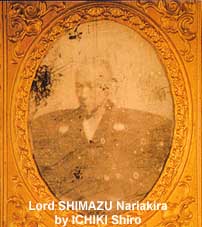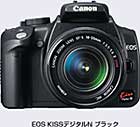Japan Photo History
Welcome to PhotoGuide Japan's PhotoHistory page!
PhotoHistory is a chronology of significant events and tidbits in the history of Japanese photography from 1646 to 2006. To see any specific historical year, see the Index box at the bottom of this page and click on the page link.
Researched and compiled by Philbert Ono
Overview of Japanese Photography History
Japanese photographic history can be divided into the following time periods:

Pre-Meiji Period (1646-1867): This was during Japan's feudal period when the country was ruled by the Tokugawa shogun. Japan was under self-imposed isolation from the rest of the world except for a small Dutch trading post in Nagasaki. In the mid-19th century, photographic technology was first introduced to Japan through the Dutch connection. The first photographs of Japanese were also taken. As Japan started to open up to the West during the final years of the Tokugawa (a period called Bakumatsu), foreigners started to settle in Japan and they included photographers who also taught photography to some Japanese.
Meiji Period (1868-1912): The Emperor (Meiji) of Japan regained control of the country from the Tokugawa. Foreign tourists were allowed to travel to Japan. The foreign and Japanese photographers who set up studios catered mainly to foreign residents and tourists. More Japanese photographers also learned photography and set up their own photo studios across Japan.
Early 20th century (1912-1945): Most foreign photographers left Japan as the number of native Japanese photographers increased. As cameras became easier to operate and cheaper in price, photography also spread to the masses and became a major hobby. Many photography magazines and camera clubs were started. Japan's own camera and film industries also started to flourish.
Post-war Period (1946-1959): Japan's photography industry retooled to recover from the devastation of World War II. Although Japanese products were of low-quality initially, Japanese cameras soon gained a world-class reputation by the late 1950s.
High-growth Period (1960-1989):</a> Japan entered an unprecedented period of high economic growth with mass consumerism. Domestic sales of durable goods soared along with an expanding export market. The label "Made in Japan" became associated with cutting-edge technology and top quality. Japan went on to become the world leader in camera technology and sales, snuffing out most German and US makers. The Japanese camera maker's competitors were no longer German or American. They were only Japanese. However, by the mid-1980s, the camera market became saturated and sales started to decline.
 Recent Period (1990-2000): A long and deep recession hit Japan during the 1990s dubbed the "lost decade." Several publishers of photo books went bankrupt. A few major photography-oriented magazines folded. Some photo galleries also closed.
Recent Period (1990-2000): A long and deep recession hit Japan during the 1990s dubbed the "lost decade." Several publishers of photo books went bankrupt. A few major photography-oriented magazines folded. Some photo galleries also closed.
On the bright side, Japanese photographic culture underwent an unprecedented rebirth and expansion. Firstly, photography gained recognition as a fine art in Japan more than ever before. Major art museums established photography departments and they and other exhibition spaces (like dept. stores) often held major photo exhibitions. This movement was capped by the construction of the Tokyo Metropolitan Museum of Photography, Japan's first public museum devoted to photography.
The ban on publishing pubic hair in print media was also abolished, resulting in a flood of books and magazines featuring nude women with uncensored pubic hair.Among the masses, the popularity of taking pictures reached unprecedented levels, sparked by high school girls armed with single-use cameras shooting anything that captured their fancy to create a photo diary. Photography also piqued the interest of many young Japanese women who made major inroads into Japan's photography world by entering photo schools, winning major photo contests, holding exhibitions, publishing photo books, and turning professional. Taking pictures suddenly became really fashionable among women and many female pop idols also start to "show-off" their new hobby. At the same time, tiny Print Club photo stickers also grew into a phenomenal fad among youngsters (and later adults) destined to become a permanent part of Japanese culture. And the Internet revolution opened a whole new dimension for photographers to display their work.
 The 21st century: As digital technology advances, more people will buy and use digital cameras. More people will learn to print their own photos with computer printers and dedicated printers. Prices of digital SLR cameras will continue to fall while the technology and image quality improves. Full-frame digital SLR cameras will also spread further as prices get cheaper. Compact camera sales will be seriously affected by camera phones, by far the most popular camera type in Japan. The integration of video in digital cameras and video-sharing sites like YouTube and image-sharing with Flickr will increase the scale of consumer-generated content mixed with social networking.
The 21st century: As digital technology advances, more people will buy and use digital cameras. More people will learn to print their own photos with computer printers and dedicated printers. Prices of digital SLR cameras will continue to fall while the technology and image quality improves. Full-frame digital SLR cameras will also spread further as prices get cheaper. Compact camera sales will be seriously affected by camera phones, by far the most popular camera type in Japan. The integration of video in digital cameras and video-sharing sites like YouTube and image-sharing with Flickr will increase the scale of consumer-generated content mixed with social networking.
The use of the Internet will continue to grow in Japan as hookup costs go down and mobile phones become more capable for the Wireless Web. Mobile phone technology will advance further with camera phones having higher resolutions. Film cameras and related supplies will continue to become obsolete. We already have a generation that has never used a film camera or videotape.
Note: Japanese personal names are written with the family name first, then the given name. PhotoHistory is under constant construction, especially the current and most recent years.
Next: PhotoHistory 1646-1867